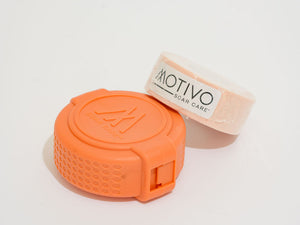Understanding Surgical Procedures on the Chest or Back and the Healing Process
Aug 17, 2023
Imagine regaining the freedom to move without pain or discomfort, the ability to embrace life without limitations. Surgical procedures on the chest or back are transformative solutions that grant individuals a new lease on life. Whether it's addressing spinal issues or chest-related concerns, these procedures hold the promise of improved well-being. In this comprehensive guide, we delve into the world of surgical interventions on the chest or back, demystifying the processes, exploring the intricacies of healing, and providing expert insights to ensure a successful recovery journey.
Introduction
Surgical procedures on the chest or back are complex and highly specialized interventions that aim to address a range of issues, from orthopedic conditions to thoracic abnormalities. These procedures require a multidisciplinary approach, involving skilled surgeons, medical professionals, and dedicated rehabilitation teams. The journey from diagnosis to recovery can be challenging, but understanding the process can alleviate concerns and pave the way for a smoother healing experience.
Surgical Procedures on the Chest or Back: A Closer Look
Spinal Fusion: Restoring Stability and Functionality
Spinal fusion is a common surgical procedure performed on the back to treat conditions such as herniated discs, spinal fractures, and degenerative disc disease. During this procedure, two or more vertebrae are fused together using bone grafts or implants, promoting stability and reducing pain. This helps to prevent abnormal motion and offers relief from chronic discomfort.
Corrective Scoliosis Surgery: Enhancing Posture and Alignment
Scoliosis, characterized by an abnormal curvature of the spine, can lead to pain and reduced quality of life. Corrective scoliosis surgery involves realigning the spine to a more natural position. Surgeons use metal rods, screws, or hooks to straighten the spine and maintain proper alignment. This procedure not only improves posture but also prevents further progression of the curvature.
Open Heart Surgery: Addressing Cardiac Concerns
Open heart surgery is a chest-related procedure designed to address various cardiac conditions, including coronary artery disease and heart valve issues. Surgeons perform this procedure by accessing the heart through the sternum (breastbone). The sternum is carefully divided, granting access to the heart for necessary repairs or interventions. Advancements in surgical techniques have led to minimized recovery times and improved outcomes.
The Healing Process: What to Expect
The journey to recovery following surgical procedures on the chest or back is a crucial phase that demands patience, dedication, and adherence to medical guidance. Each procedure comes with its own set of healing requirements, but there are general principles that apply to most cases.
Initial Recovery Phase: Rest and Monitoring
In the days immediately following surgery, rest is paramount. Patients are closely monitored in a healthcare facility to ensure that vital signs remain stable and that there are no complications. Pain management is carefully administered, allowing patients to rest comfortably while the body initiates the healing process.
Rehabilitation and Physical Therapy: Restoring Functionality
As the initial recovery phase progresses, rehabilitation and physical therapy become key components of the healing journey. For back procedures, exercises focused on strengthening the core and improving flexibility aid in restoring functionality. Chest-related procedures may require specialized breathing exercises to prevent complications and enhance lung function.
Gradual Return to Normalcy: Patience and Perseverance
As the weeks pass, patients gradually regain strength and mobility. It's important to follow the guidance of medical professionals, gradually increasing activity levels while avoiding strenuous activities. This phase requires patience, as pushing too hard too soon can lead to setbacks in the healing process.
FAQs
How long does the recovery process typically take?
Recovery times vary depending on the procedure performed and individual factors. While some patients experience significant improvement within a few weeks, others may require several months to achieve full recovery.
Are there any risks associated with these surgical procedures?
Like any surgery, there are potential risks involved, including infection, blood clots, and adverse reactions to anesthesia. However, advancements in medical technology and surgical techniques have significantly reduced these risks.
Will I experience pain during the recovery period?
Pain is a normal part of the recovery process, but it is managed through prescribed medications. Your medical team will work closely with you to ensure your comfort and well-being.
When can I resume my daily activities?
The timeline for resuming daily activities varies. Your surgeon and rehabilitation team will provide guidance based on your progress. Generally, patients can gradually return to routine activities over a span of weeks to months.
Can physical therapy be done at home?
While supervised physical therapy is recommended, some exercises can be performed at home as instructed by your rehabilitation team. However, ensure that you follow proper technique to prevent injury.
How can I support my emotional well-being during recovery?
Recovery can be emotionally challenging. Staying connected with loved ones, engaging in hobbies, and practicing relaxation techniques can contribute to a positive mindset during the healing process.
Conclusion
Surgical procedures on the chest or back offer renewed hope for individuals grappling with pain and limitations. From spinal fusion to corrective scoliosis surgery, these interventions pave the way for improved functionality and a higher quality of life. Navigating the healing process requires patience, dedication, and a partnership with medical professionals who guide you toward a successful recovery. By understanding the procedures, embracing the healing journey, and seeking support when needed, you can embark on a path to restored health and well-being.












